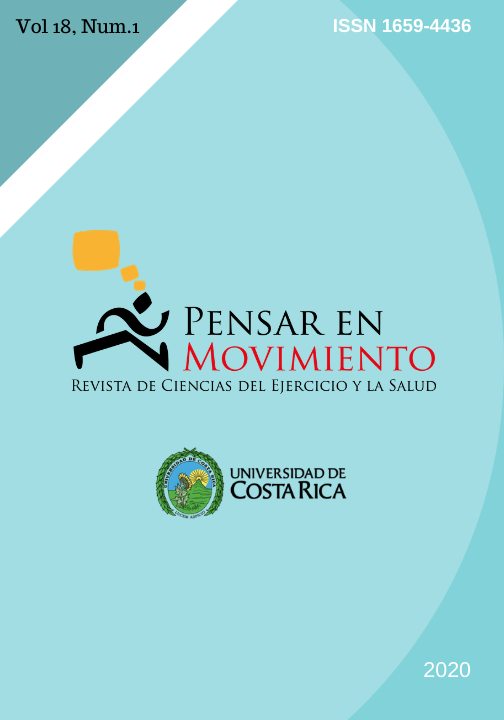Abstract
Capitán-Jiménez, C. & Aragón-Vargas, L.F. (2016). Thirst Response to Post-Exercise Fluid Replacement Needs and Controlled Drinking. Pensar en Movimiento: Revista de Ciencias del Ejercicio y la Salud, 14(2), 1-16. Perceived thirst (TP) was evaluated as a dependent variable: can it distinguish among several levels of acute dehydration, is it reliable, and how does it respond to the ingestion of a fixed water volume post exercise? In a repeated-measures design, eight physically active students (24.5±3.6 years, mean±SD), reported to the laboratory on four non-consecutive days. They remained at rest or exercised at 32±3°C db and 65±6% rh to a randomly assigned dehydration equivalent to 1, 2, and 3% of body mass (BM). Following exercise, participants ingested a fixed water volume of 1.20% BM in 30 minutes; urine output, TP and plasma volume changes were assessed every 30 minutes over 3 hours. Post-exercise TP was not different before and after showering (p = 0.860), but it was significantly different among conditions (TP = 2.50 ± 0.45, 4.44 ± 0.72, 6.38 ± 0.82, and 8.63 ± 0.18 for 0, 1, 2, and 3% BM, p = 0.001). TP was associated with net fluid balance (rpart = -0.62, p < 0.0001) but, soon after drinking, TP was the same regardless of dehydration (p > 0.05). Thirst perception is valid and reliable in the absence of drinking but it responds inappropriately to water intake.
References
Capitán-Jiménez, C., & Aragón-VargasL. (2016). THIRST RESPONSE TO POST-EXERCISE FLUID REPLACEMENT NEEDS AND CONTROLLED DRINKING. Pensar en Movimiento: Revista de Ciencias del Ejercicio y la Salud, 14(2), 1-16. https://doi.org/10.15517/pensarmov.v14i2.25853







